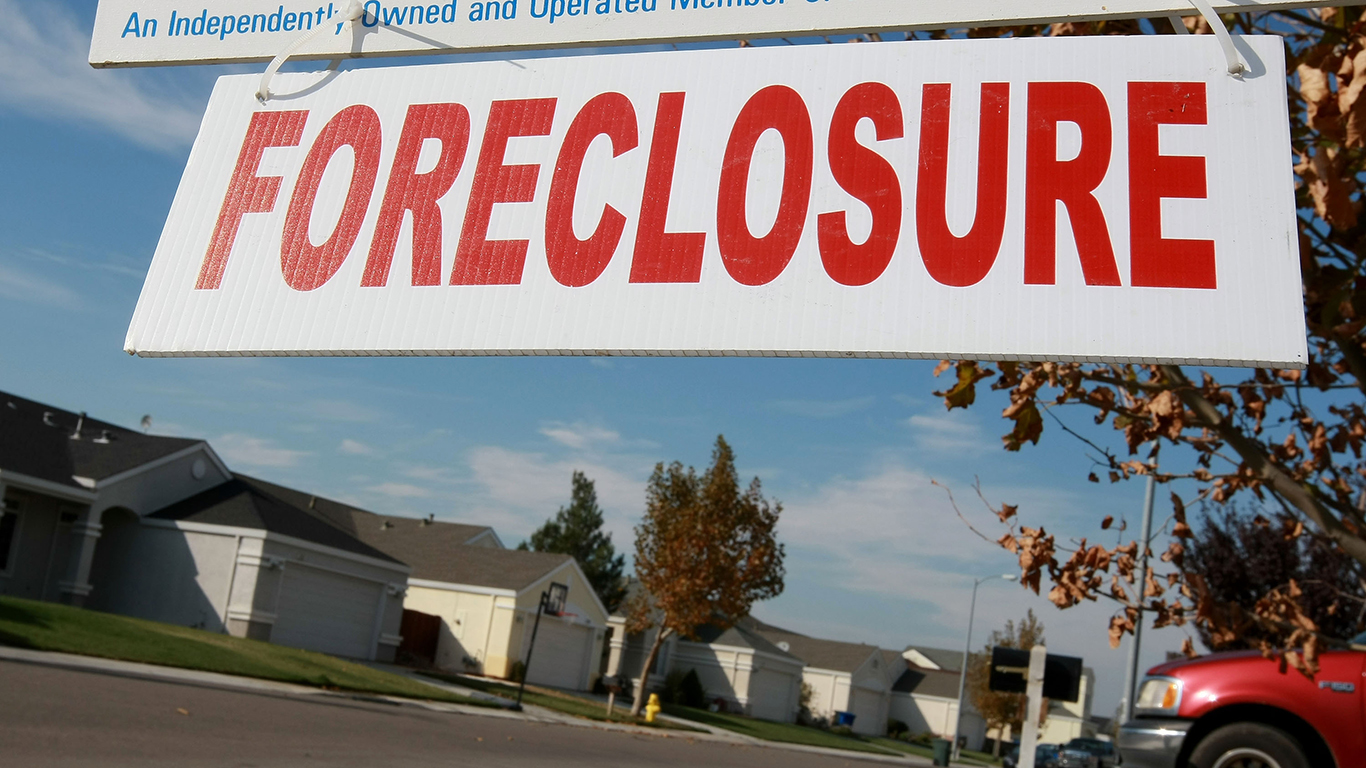Housing
Since the Housing Crisis, Foreclosed Homes Have Appreciated Most Rapidly

Published:
Last Updated:

Following the housing bust of 2007, the value of a foreclosed home in Denver dropped by 21%. Since then, that same home has appreciated in value by 116%.
While Denver is an extreme example, the value of a foreclosed home since the bust has grown 1.6 times faster than a typical home, according to a new report from online real estate firm Zillow.
Nearly half (45.5%) of the homes foreclosed between January 2007 and December 2015 were valued in the bottom third of all U.S. homes. Many of those homes were owned by the least wealthy Americans, and when they lost their largest single asset in the housing bust, they also lost the chance to regain that wealth as their lost homes quickly regained valued during the recovery.
According to Zillow’s report, values for the lowest priced homes fell farther, and more quickly, when the housing market collapsed. People who owned these homes were soon underwater — that is, they owed more on their mortgage than the home was worth.
Combined with job losses and longer periods of unemployment during the recession that followed the housing bust, foreclosed homeowners were forced to rent. That sent rents through the roof and made it nearly impossible for former homeowners to begin accumulating wealth again, whether through savings or buying another home.
These former homeowners missed out on the recovery. And what a recovery it was. Zillow notes:
To be sure, the recovery has been robust. Nationwide, previously foreclosed homes lost 42.6 percent of their value during the bust, but have since earned it all back and then some. Today, the median, previously foreclosed home is worth 0.1 percent more than it was during its pre-recession peak, a testament to the precipitous pace of home value growth over the past six years. Over the same time, the typical U.S. home value fell 25.9 percent – a much more moderate decline – and is worth 8.1 percent more today than it was before the recession. Throughout the recovery, the typical foreclosed home grew in value 1.6 times faster than the typical home nationwide.
The housing bust and recovery widened the gap between the wealthy and the poor in the United States. Zillow concludes:
Wealth and income inequality have been at the forefront of discussion as the nation climbs out of one of its greatest recessionary periods, and for good reason. The gap between the rich and poor in the U.S. worsened throughout the housing bust and foreclosure crisis that followed, as millions lost not only the roof over their heads, but the wealth – and the opportunity to potentially build more – that came with it.
The Zillow report on the housing bust is available at the company’s website.
Here’s our look at a recent report from the Federal Reserve Bank of St. Louis on how much of Americans’ personal wealth is tied up in their homes.
The thought of burdening your family with a financial disaster is most Americans’ nightmare. However, recent studies show that over 100 million Americans still don’t have proper life insurance in the event they pass away.
Life insurance can bring peace of mind – ensuring your loved ones are safeguarded against unforeseen expenses and debts. With premiums often lower than expected and a variety of plans tailored to different life stages and health conditions, securing a policy is more accessible than ever.
A quick, no-obligation quote can provide valuable insight into what’s available and what might best suit your family’s needs. Life insurance is a simple step you can take today to help secure peace of mind for your loved ones tomorrow.
Click here to learn how to get a quote in just a few minutes.
Thank you for reading! Have some feedback for us?
Contact the 24/7 Wall St. editorial team.